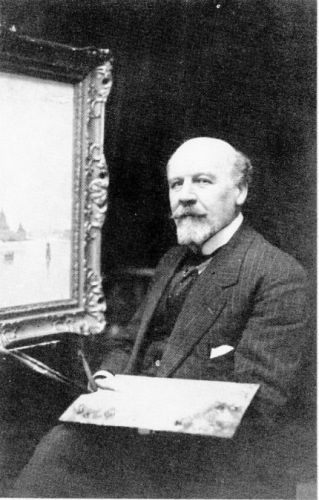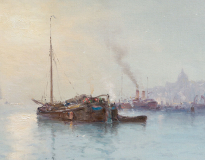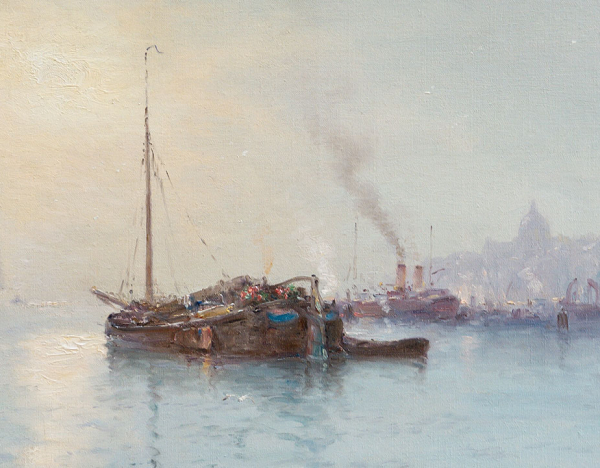Marie-Joseph Clavel dit Iwill
( 1850-1923 )
Biography


Born into a family with ties to Lorraine, he spent part of his childhood in Nancy. After studying at the Lycée Bonaparte in Paris, he began a career in commerce, fulfilling his father's expectations. In particular, he worked in the jewelry industry, where he demonstrated a particular talent for drawing.
The Franco-Prussian War of 1870 marked a decisive turning point in his life. He enlisted as a volunteer, attained the rank of sergeant and, after the defeat of the Army of the East, found himself interned in Switzerland. It was in contact with the snow-covered Alpine landscape that he developed a deep fascination for nature. This experience forged his artistic vocation and permanently distanced him from commerce.
On his return, he worked briefly as a stenographer in the secretariat of the French National Assembly, but his passion for art led him to devote himself fully to painting. By adopting the pseudonym “Iwill”, he affirmed his determination to succeed in this field.
In 1875, he began exhibiting at the Salon de la Société des Artistes Français, where his talent was quickly recognized. In 1885, he became one of the founders of the Société Nationale des Beaux-Arts, and also took part in prestigious salons such as those of Orientalists, Watercolorists and Pastellists. His paintings featured in world exhibitions, where he won several awards.
Iwill is particularly appreciated for his luminous, atmospheric landscapes, often executed in pastel, a technique he masters with great finesse. His work reflects a particular attention to light, whether bright or subdued, and a continuous search for emotion and serenity.
An avid traveler, he sets up his easel in Normandy, Brittany, Holland, Italy (notably Rome and Venice) and many other regions. His works capture the unique atmosphere of each place, be it shifting skies, changing seasons or soft light. He was also influenced by the resurgence of pastel painting in his day, which he helped to enrich.
Iwill was made a knight of the Légion d'honneur in 1894 in recognition of his artistic contribution. Throughout his career, he remained true to his aesthetic convictions, rejecting easy work in favor of in-depth study of nature.
His works, which bear witness to his attachment to the beauty of the world, continue to be highly prized. They feature in numerous private and public collections in France and abroad. Enthusiasts of his art see him as a sensitive painter, capable of transcribing with emotional precision the landscapes he contemplates.
93400 Saint-Ouen sur Seine

